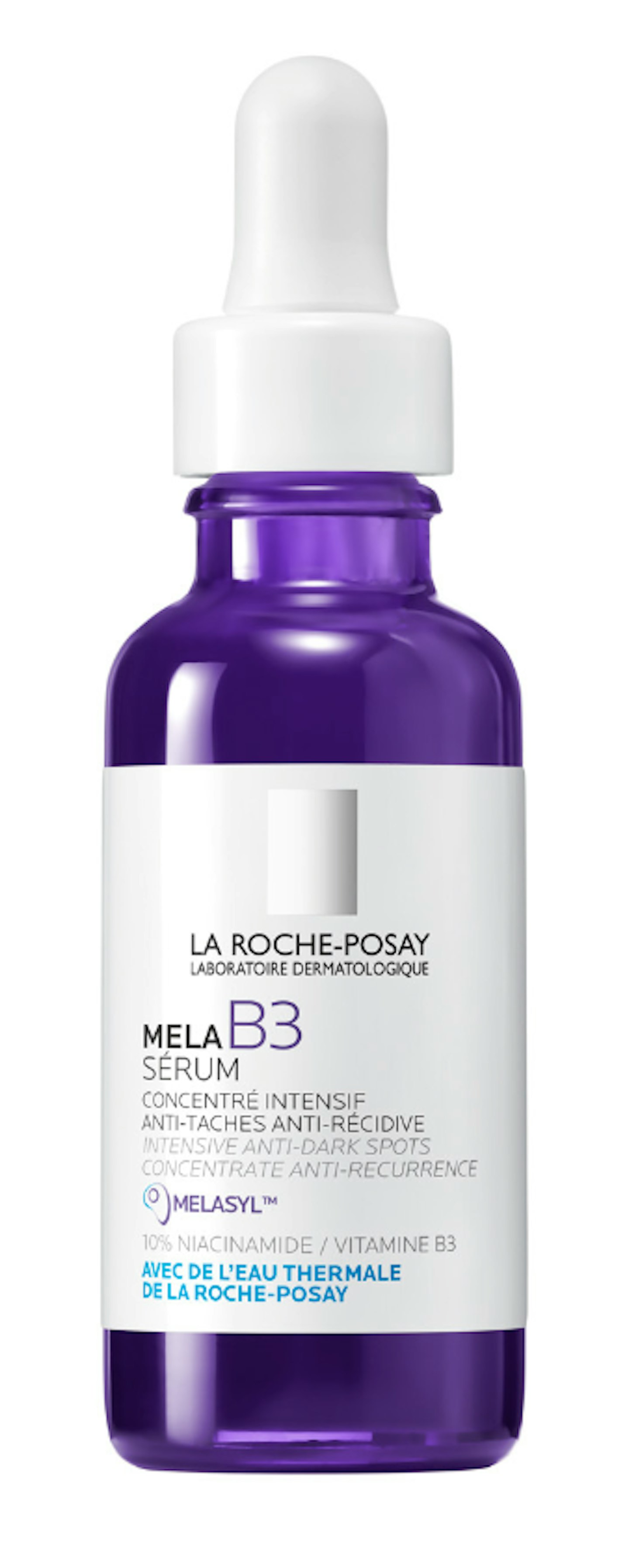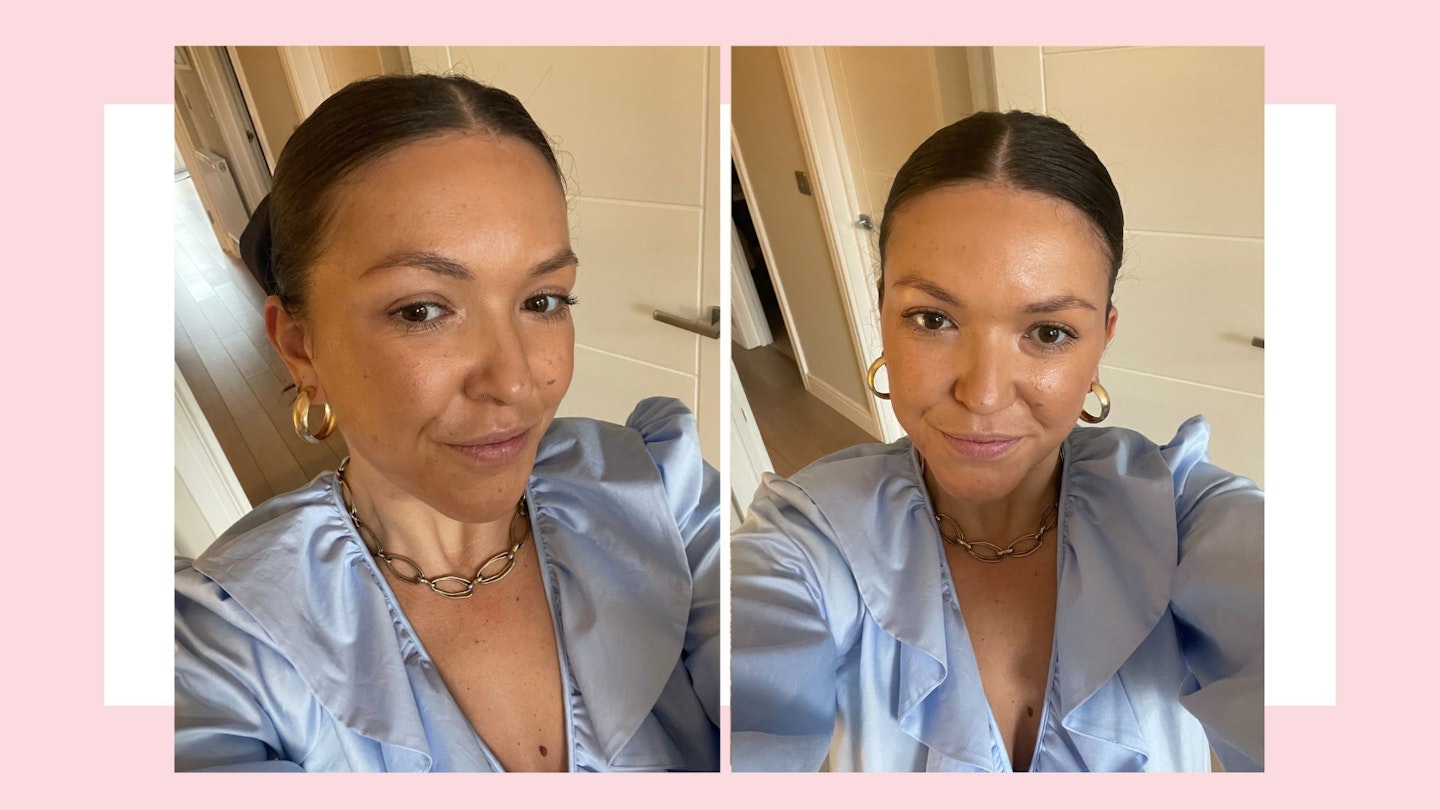I’ll start with the bad news. One in two of us suffer from pigmentation-related skin conditions. That’s a lot of people dealing with dark marks, brown splotches and discolouration of the skin. I’m one of them.
Over the last few years, hyperpigmentation on my face has become an increasingly dominant feature. There’s the creeping veil of dark splodges spreading over my cheeks, the pesky patches popping up on my forehead and, to top it off, a shadow of colour hovering above my top lip.
What is hyperpigmentation?
In a nutshell it’s the overproduction of melanocytes, the cells that define our skin colour. We need melanin because it helps protect our cells from harmful UV rays. However, too much of it is what causes unevenness, unwanted discolouration and dark spots.
What causes hyperpigmentation?
Inflammation is the main culprit. UV exposure, age, genetics, pollution and oxidative stress all fuel inflammation, stimulating melanin production. As more melanin accumulates, hyperpigmentation becomes visible on the skin.
Although not a dangerous condition, pigmentation is notoriously tricky to treat, particularly in darker skin tones. Traditionally, you had two options: over-the-counter products or an in-clinic treatment. Yes, both of these could be effective but they also come with side effects. 'Over-the-counter products can cause skin irritation, redness or peeling,' says dermatologist Dr. Andrew Alexis. Laser, meanwhile - the most common targeted treatment for getting rid of pigmentation on the face - also comes with its share of problems. 'It can be effective with long lasting results,' says Dr. Alexis, 'but it’s an expensive choice and requires multiple sessions. Plus, potential side effects include redness, swelling, and temporary darkening of treated areas.'
In fact, the side effects of these treatments can often outweigh their benefits. 'The high cost of irritation, peeling, redness and other side effects can damage sufferers’ mental health and quality of life,' explains Dr. Alexis. Another dermatologist, Dr. Alia Ahmed, told me about one patient of hers who took eight days off work to deal with the side effects of having her pigmentation treated.
So, onto the good news. About time. I’ve discovered an at-home pigmentation treatment that seems to be minimising the tell-tale signs and, crucially, doesn’t have any side effects - at least, not for me. The product in question is La Roche-Posay Mela B3, £48 and a lot of research has gone into formulating it – 18 years, to be precise.
Best serum for hyperpigmentation
 @verity_clark
@verity_clarkwww.facethefuture.co.uk
A lightweight gel formula that uses a clever combination of Melasyl and niacinamide. The former works to intercept melanin causing hyperpigmentation and the latter is a gold star ingredient for helping even-out skin tone and brighten complexions.
Pros
- Gentle enough for all skin types
- Great for daily use
- Doesn't irritate
Cons
- Bottle is quite small
How La Roche Posay Mela B3 Works
Truthfully, I’ve never met a La Roche Posay product I didn’t like. Efficacious, science-first, great for sensitive skin and fairly affordable - they tick all my skincare boxes. I was excited, then, to get my hands on the brand's newest skincare invention: Mela B3. It is made up of two star ingredients (alongside other skincare actives), Melasyl and niacinamide. The former is the most exciting bit. A patented molecule, it works by intercepting excess melanin (the stuff that causes discolouration) before it appears on the skin. So what? 'In the past, solutions have focused on blocking melanin – the dark pigment within our skin,' explains Dr. Alexis, 'however, melanin is an essential part of our skin that offers protection against UV rays and gives the skin its unique tone. So, blocking melanin is not the answer.' Here, though, melanin is trapped rather than blocked helping to stop its overproduction and prevent dark marks forming, or getting worse.
Clever. Paired with niacinamide, a well-known anti-inflammatory used to even out the skin tone, Mela B3 is one of the most innovative skincare products I’ve come across in a while.
How To Use La Roche Posay Mela B3
The lightweight gel formula is a dream to use, it absorbs almost instantly and I’ve been using it daily underneath my moisturiser and SPF - an essential for everyone, but especially those prone to pigmentation.
Our Verdict
Verity Clark, Acting Beauty Director
'I’ve been debating whether to invest in a laser treatment to tackle my hyperpigmentation for a while now. The cost and potential side effects make it seem like a big commitment though. Before I decide whether to go for it, I’ve been trialling powerful pigmentation products to see if they make a difference. This sells itself on the hyperpigmentation-preventing properties and it has seamlessly replaced my usual daily serum , slotting into my skincare routine nicely. To really make a bold claim on the efficacy of this, I’d need to test it over a prolonged period of time. However, in the last few weeks there has been a definite improvement in clarity to my complexion. Plus, my hyperpigmentation certainly hasn’t got any worse. The other thing I’ve been impressed with is that there has been none of the redness or irritation that I usually experience when trying to defeat dark marks. So far, so impressed.
Verity Clark is Grazia's Acting Health & Beauty Director where she covers all things health, beauty and wellness related.
